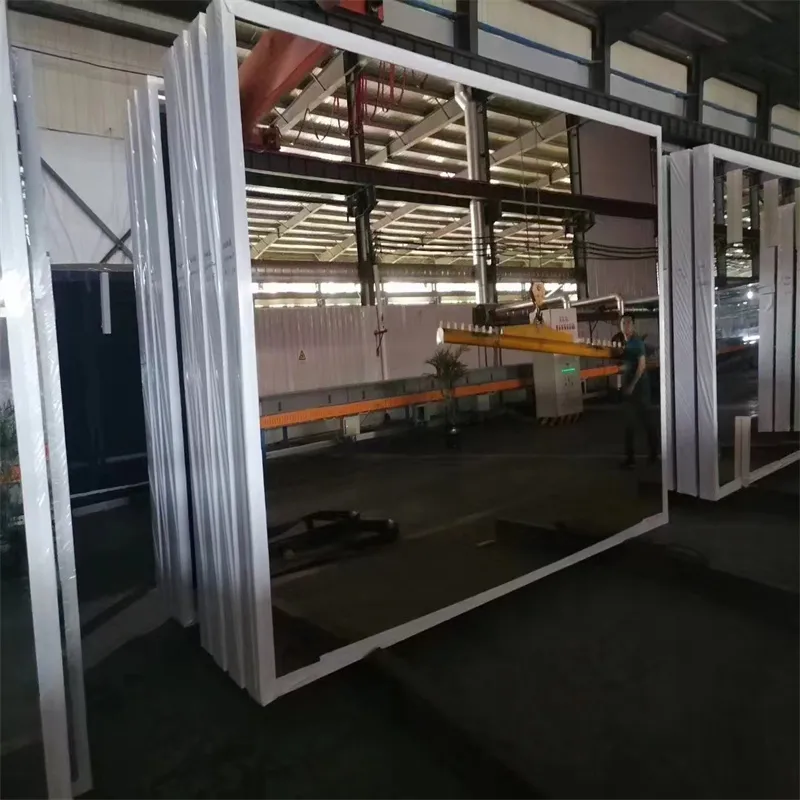Nov . 08, 2024 03:20 Back to list
Low Emissivity Glass Coatings for Enhanced Energy Efficiency and Thermal Performance
The Advantages of Low Emissivity Glass Coatings
In today’s architectural and industrial landscape, energy efficiency and sustainability are major considerations. One of the key innovations contributing to these goals is low emissivity (Low-E) glass coating. This technology offers significant benefits in thermal performance, making it a popular choice in both residential and commercial applications. Understanding the properties and advantages of Low-E glass can help consumers and builders make informed decisions.
Low emissivity glass is coated with a thin layer of metal or metallic oxide that significantly reduces infrared and ultraviolet light without compromising the visible light that passes through. The primary function of this coating is to enhance the glass’s ability to reflect heat rather than absorb it. In the context of buildings, this means that in colder climates, Low-E glass helps retain indoor heat, while in warmer climates, it reflects exterior heat away from living spaces.
The Advantages of Low Emissivity Glass Coatings
Moreover, Low-E glass coatings enhance indoor comfort. Traditional glazing can create hot and cold spots within a room due to temperature fluctuations. In contrast, Low-E glass maintains a more consistent indoor temperature. This stability significantly improves comfort levels, especially in larger spaces or those with lots of windows.
low emissivity glass coating

Additionally, Low-E glazing contributes to better control of natural light while reducing glare. It allows for generous daylighting, which enhances the aesthetic quality of spaces and can improve mood and productivity for the occupants. Importantly, it also protects furnishings and flooring from fading by blocking harmful ultraviolet rays, helping to extend the life of interior decor.
Sustainability is a critical aspect of modern construction, and Low-E glass coatings align perfectly with this trend. By maximizing energy efficiency, they not only help in reducing greenhouse gas emissions but also contribute to LEED certification for green buildings. This recognition can be invaluable for property owners and builders looking for a competitive edge in the market.
Another notable point is the versatility of Low-E coatings. They can be applied to various types of glass used in windows, doors, and façades, enhancing their performance without altering aesthetics significantly. Manufacturers offer a variety of Low-E products, allowing builders to select the optimal solution for specific climatic conditions and design needs.
While the initial investment in Low-E glass may be higher than that of standard glazing options, the long-term savings in energy costs, improved comfort, and added value to properties make it a smart choice. It's an investment that pays off not only in reduced energy bills but also in enhancing the overall quality of life for occupants and reducing environmental impact.
In conclusion, Low-E glass coatings are a transformative technology in the construction and design sectors, offering numerous advantages including energy efficiency, comfort, and sustainability. As we continue to prioritize green building practices, the adoption of Low-E glass will likely grow, setting new standards for energy efficiency and environmental responsibility in the built environment. With ongoing advancements in glazing technology, the future looks bright and energy-efficient, one Low-E window at a time.
-
Safety and Style with Premium Laminated Glass Solutions
NewsJun.24,2025
-
Reinvents Security with Premium Wired Glass
NewsJun.24,2025
-
Premium Float Glass Line for Modern Architecture
NewsJun.24,2025
-
Low Emissivity Glass for Energy-Efficient Architecture
NewsJun.24,2025
-
High-Performance Insulated Glass Solutions for Modern Architecture
NewsJun.24,2025
-
Elevates Interior Style with Premium Silver Mirror
NewsJun.24,2025
Related PRODUCTS














